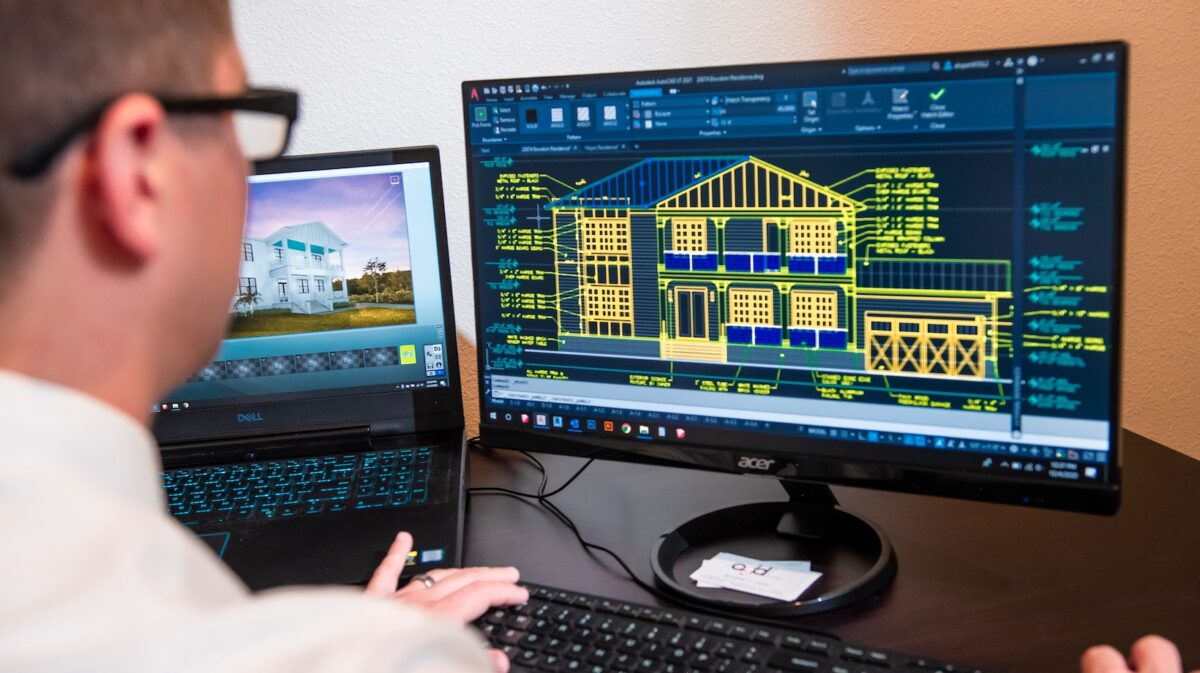Becoming an AutoCAD designer is an exciting career path that offers numerous opportunities for creativity and growth. If you have a passion for design and a knack for technical drawings, this could be the perfect field for you. In this article, I’ll share some valuable tips on how to become an AutoCAD designer and kickstart your journey in this dynamic industry.
To begin your journey as an AutoCAD designer, it’s crucial to gain a solid understanding of the software itself. Familiarize yourself with its features, tools, and capabilities through online tutorials or courses. Practice regularly to hone your skills and improve your efficiency in creating precise technical drawings.
In addition to mastering the software, it’s essential to develop a strong foundation in drafting principles and design concepts. This includes learning about different types of drawings, such as architectural plans or mechanical schematics, as well as understanding measurement systems and standards used in the industry.
How to Become AutoCAD Designer
As an AutoCAD designer, I’ll walk you through the fundamentals of this field. AutoCAD, short for “computer-aided design,” is a software application widely used in various industries to create precise 2D and 3D digital drawings. The role of an AutoCAD designer involves utilizing this powerful tool to translate concepts and designs into technical drawings that can be used for construction, engineering, architecture, and more.
AutoCAD designers play a crucial role in the design process by collaborating with architects, engineers, and other professionals to transform ideas into visual representations. They ensure accuracy and precision in their work while adhering to industry standards and project requirements. With a deep understanding of building codes, materials, and drafting techniques, they bring designs to life on a virtual canvas.
Developing Essential Skills for AutoCAD Design
To excel as an AutoCAD designer, several key skills are essential to master:
- Technical proficiency: A deep understanding of the AutoCAD software’s tools and functions is crucial. Familiarity with commands such as drawing lines, creating arcs, modifying shapes, dimensioning objects, and generating accurate measurements is vital.
- Attention to detail: Precise attention to detail ensures that every element within a design is accurately represented. From dimensions to annotations and symbols placement, even the smallest discrepancies can have significant consequences during construction or manufacturing processes.
- Problem-solving abilities: As an AutoCAD designer encounters complex projects or faces challenges during the design phase; problem-solving skills become critical. Being able to identify potential issues early on allows for proactive solutions before implementation.
- Creativity: While technical proficiency is important when it comes to using AutoCAD effectively; creativity helps designers think outside the box when tackling unique design challenges or finding innovative solutions.
- Communication skills: Collaboration is at the heart of AutoCAD design. Effective communication with team members, clients, and stakeholders is vital for understanding project requirements, clarifying design intent, and ensuring a smooth workflow.

Exploring Career Opportunities for AutoCAD Designers
AutoCAD designers have a range of career opportunities across various industries. Here are a few examples:
- Architecture: AutoCAD designers work closely with architects to create detailed drawings of buildings, floor plans, elevations, and construction documents.
- Engineering: From civil engineering to mechanical engineering, AutoCAD designers assist in creating technical drawings that serve as blueprints for infrastructure projects or machine designs.
- Interior Design: AutoCAD plays an integral role in interior design by helping designers visualize spaces, plan layouts, and communicate their ideas effectively to clients.
- Manufacturing: In the manufacturing industry, AutoCAD designers contribute by creating detailed product designs and specifications that guide the production process.
- Construction: Construction companies rely on accurate architectural and structural drawings created by AutoCAD designers to ensure precise execution during building projects.
By acquiring the necessary skills and exploring these diverse career opportunities; aspiring individuals can embark on a fulfilling journey as an AutoCAD designer.
Gaining practical experience is vital in becoming a successful AutoCAD designer. Look for internships or entry-level positions where you can apply your knowledge in real-world projects. Collaborating with experienced professionals will not only enhance your skills but also provide valuable networking opportunities.
By following these steps – acquiring proficiency in AutoCAD software, building a strong foundation in drafting principles, and gaining practical experience – you’ll be well on your way to becoming a skilled AutoCAD designer. Stay dedicated to continuous learning and keep up with industry trends to stay competitive in this ever-evolving field.

